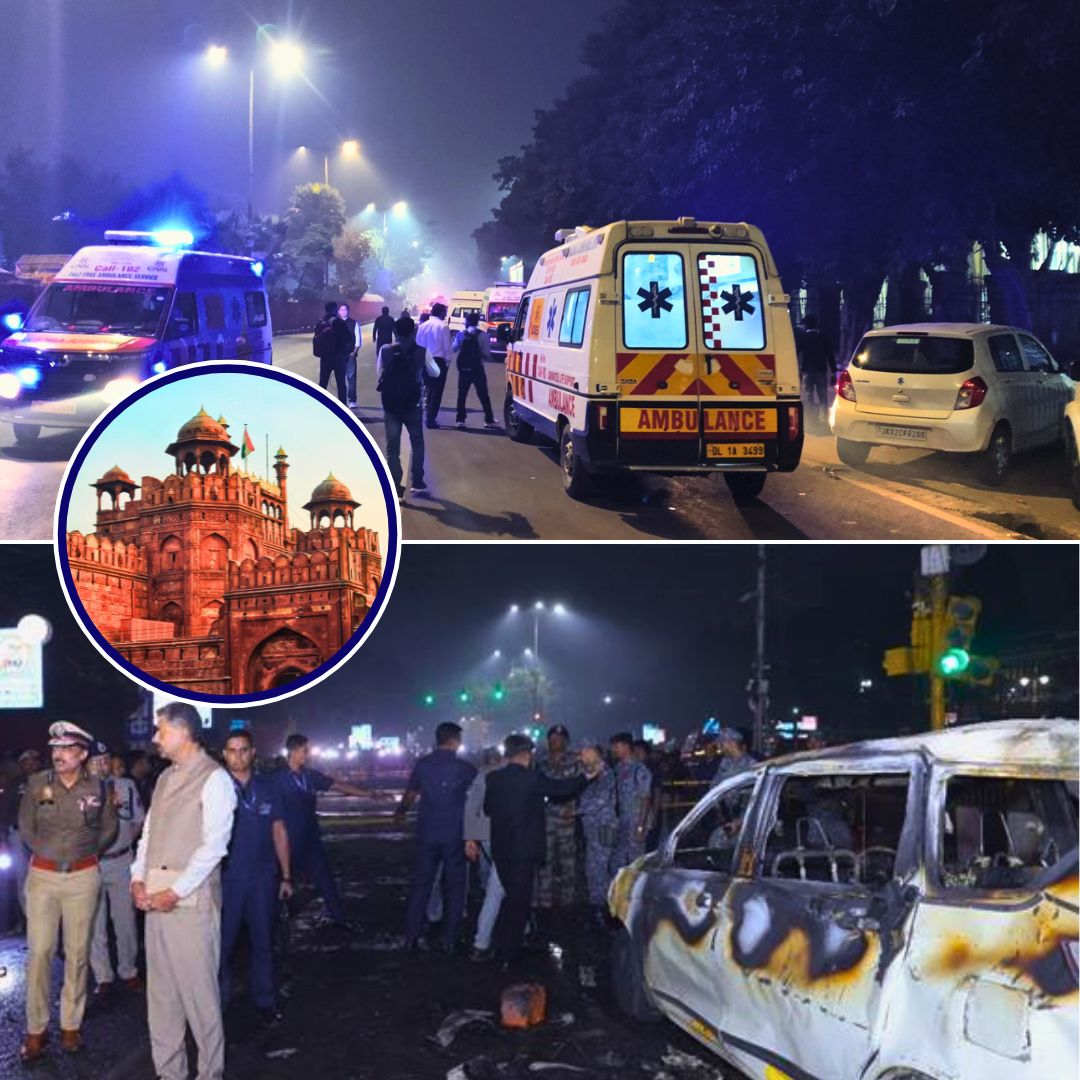Outside Delhi’s Lok Nayak Jai Prakash (LNJP) Hospital, the air hangs heavy with grief and exhaustion. Families of the Red Fort blast victims have been waiting for hours hoping for news about their loved ones after the devastating explosion near Red Fort Metro Station on November 10.
Wrapped in blankets, men and women sit silently on the pavement, clutching phones that no longer ring. Mothers whisper prayers, wives ask passing hospital staff for names, and children stare into the distance, not fully understanding what has happened. “We have been here since morning. No one is telling us anything,” one man told reporters from The New Indian Express.
The blast, which killed at least 13 people and injured over 20, was powerful enough to shake windows across the area. But what followed was a different kind of shock, one marked by confusion, silence, and fear, as many were left outside with no information about their loved ones inside the hospital premises.
Prime Minister Narendra Modi met the survivors of the Delhi Red Fort blast on Wednesday at the LNJP Hospital after returning from Bhutan. Sharing the pictures, he wrote, “Those behind the conspiracy will be brought to justice!” In the meanwhile, nine suspects were arrested from Kanpur on Wednesday in connection with the Delhi blast.
Went to LNJP Hospital and met those injured during the blast in Delhi. Praying for everyone’s quick recovery.
— Narendra Modi (@narendramodi) November 12, 2025
Those behind the conspiracy will be brought to justice! pic.twitter.com/HfgKs8yeVp
Confusion at the Hospital Gates
The deceased involved an e-rikshaw driver, a shopkeeper, a printing press worker and more. Most of them were the sole breadwinner of their families, mostly from Delhi and neighboring Uttar Pradesh districts like Shamli, Amroha, and Shravasti.
Nauman Ansari, an 18-year-old cosmetics shop owner from Shamli, had travelled to Delhi to buy supplies for his shop. His uncle revealed Nauman was the only earning member of his family and was killed on the spot. Another victim, Ashok Kumar, a 34-year-old Delhi Transport Corporation conductor from Amroha, supported not only his two children but also took care of his ailing brother’s three kids.
Stories of Loss and Family Struggles
Pankaj Sahni, a 22-year-old cab driver, was also among those killed. His family described him as the sole earner who worked tirelessly to support them. Another victim, Dinesh Mishra, survived by just a week working in Delhi at a sari and lehenga shop and left behind a wife and three children.
His relatives shared the heartache of not seeing him one last time due to the condition of his remains. Noman, a young man from Shamli who ran a cosmetic shop, had come to Delhi to purchase goods when the blast occurred; he had taken on the responsibility as breadwinner after his elder brother fell ill.
Grieving Families and Friends
Dozens of relatives rushed to LNJP Hospital after the explosion, only to find the gates sealed and police surrounding the emergency ward. Access was limited as authorities tried to control the crowd and maintain security amid the ongoing investigation.
Several family members claimed they were not allowed to enter the wards to identify or meet their relatives. A man from Chandni Chowk said he had been waiting outside all night: “My brother’s phone was found near the blast site, but I still don’t know if he’s here. I just want to see him once.”
The crowd outside the hospital grew as the hours passed. Some found solace in helping each other, offering biscuits, water, or a phone call, while others simply sat in silence. With no shelters or food facilities nearby, families waited under open skies, their faces reflecting both fatigue and hope.
Grief That Goes Beyond Numbers
Every blast leaves behind numbers, casualty figures, investigation updates, lists of injured, but behind each statistic is a story of interrupted lives. Many victims were daily wage workers, rickshaw drivers, and small traders returning home after a day’s work.
As the National Investigation Agency (NIA) digs deeper into the suspected terror links, the people left behind are struggling to make sense of their loss. “I just want to know if he’s alive,” said another relative, quoted in Millennium Post. “They’re saying investigation is on, but for us, time stopped that evening.”
The Logical Indian’s Perspective
The tragic Red Fort blast lays bare the vulnerabilities of even the most historically and culturally significant public spaces, reminding us of the urgent need for holistic security measures that protect citizens without compromising compassion.
The Logical Indian calls for a balanced approach, one that promotes vigilance and accountability while prioritising empathy and support for victims and their families. Terror leaves deep wounds extending beyond physical destruction, touching lives caught in the crossfire.











